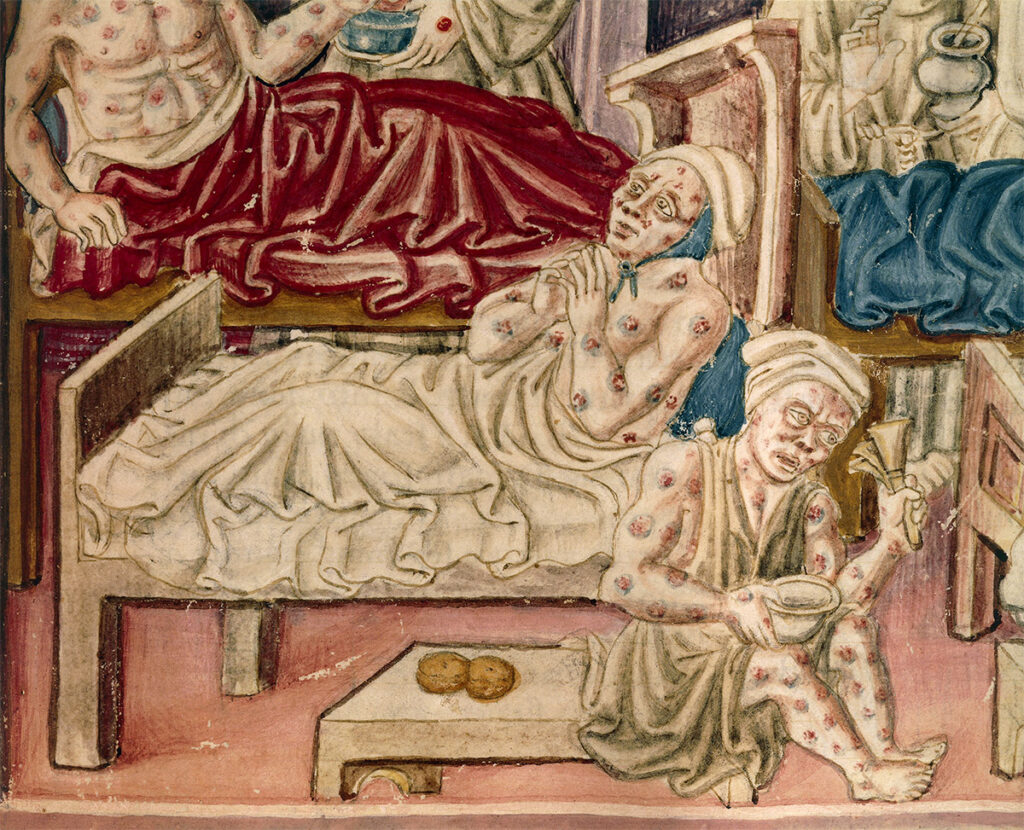The plague arrived in Europe in October 1347, when 12 ships from the Black Sea docked at the Sicilian port of Messina. Most sailors aboard the ships were dead, and those still alive were covered in black boils that oozed blood and pus. Sicilian authorities quickly ordered the fleet out of the harbor, but it was too late. Curious about this pandemic? Here is everything you need to know about the Black Plague.
Where did the Black Plague start?
Many Europeans had heard rumors about a “Great Pestilence” across the Near and Far East trade routes, even before the 1347 fleet of ‘death ships.’ In the early 1340s, the disease struck China, India, Persia, Syria, and Egypt.
The plague is thought to have originated in Asia over 2,000 years ago and was likely spread by trading ships. However, recent research has indicated the pathogen responsible for the Black Death may have existed in Europe as early as 3000 B.C.
How did it spread?
The Black Death was terrifyingly and indiscriminately contagious. According to Boccaccio’s written record, the mere touching of the clothes “appeared to itself to communicate the malady to the toucher.” The disease was also so quick that healthy people could be dead within hours.
It spread through the air, as well as through the bite of infected fleas and rats. These pests were almost everywhere in medieval Europe, but they were particularly at home aboard ships, which is how the Plague made its way through Europe.
The flagellants
Since the plague was so mysterious, people started coming up with different possible reasons; the theory that it was a divine punishment was the basis of the flagellants’ actions. The flagellants would beat themselves with metal-studded leather straps from town to town.
They repeated the ritual three times daily as townspeople looked on. They believed that they were punishing themselves to prevent divine punishment. Eventually, they started to usurp the authority of the Pope, making the movement fall apart after a while.
The medical approach to the Black Plague
Physicians relied on crude and unsophisticated techniques such as bloodletting, boil-lancing, and superstitious practices such as burning aromatic herbs and bathing in rosewater or vinegar. Needless to say, these medical practices were hardly effective in treating symptoms.
In a panic, healthy people did all they could to avoid the sick ones. Doctors refused to see patients, and the healthcare centers became ‘death centers’ instead of treatment centers. The Black Plague greatly showed the flaws of the medical system then.
Did the Black Death recur or end?
Several years later, research showed that the Black Plague was spread by a bacillus called Yersinia pestis. It is a Bubonic Plague that makes the lymph nodes swell to the size of an egg and causes vomiting, fever, aches, diarrhea, and, eventually, death.
The plague reappeared for centuries, but improved sanitation practices mitigated the effects of the disease. Also, there are antibiotics to treat it. However, these practices haven’t eliminated the disease– there are still 1,000 to 3,000 plague cases yearly, according to WHO.







